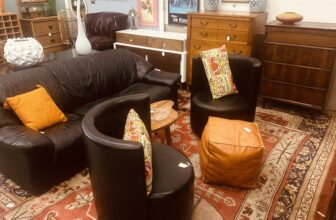How to read an object: makers’ marks, materials and patina for authenticating antiques
How to read an object: makers’ marks, materials and patina for authenticating antiques
Distinguishing genuine antiques from reproductions is essential for collectors, dealers, designers, and serious thrift-hunters. This practical guide focuses on three visual and physical clues—makers’ marks, joinery techniques, and patina—that most reliably indicate age, origin, and authenticity across furniture, ceramics, metalwork, and sculpture.
Understanding makers’ marks
Makers’ marks are stamped, engraved, or painted signatures and symbols that point to an object’s maker, workshop, or country of origin. Learning to read makers’ marks is one of the fastest ways to narrow provenance and support antique authentication.
Common types of makers’ marks
- Signature marks: hand-signed or incised names from individual artisans.
- Stamp marks: impressed logos or manufacturer stamps used by factories and workshops.
- Hallmarks: regulated stamps on silver and gold that indicate purity and assay office.
- Factory or pattern numbers: often used on mass-produced pieces to identify models or production runs.
How to interpret marks
- Research the mark with reputable databases and reference books; corroborate dates and geography before making a judgement.
- Compare style, typography and placement: certain periods favored specific mark locations and scripts.
- Check for alterations: re-stamped, forged, or relocated marks are common on forgeries.
For a broader view on period pieces and cataloguing object types, see what are the different types of antiques (https://yoursite.com/blog/what-are-the-different-types-of-antiques) which helps contextualize makers’ marks within broader classifications.
Evaluating joinery techniques and tool marks
Construction reveals craft. Joinery techniques and tool marks tell you whether an item was hand-made, workshop-produced, or mass-manufactured—critical information for authenticating furniture and wooden objects.
Key joinery techniques to recognize
- Mortise and tenon: a centuries-old, durable method often found in quality period furniture (see detailed examples at Antique HQ: antique-hq.com).
- Dovetail joints: hand-cut dovetails show uneven pins and tails; machine-cut dovetails are uniform and typically 19th–20th century onward (additional context on traditional joinery at vtfurnitureworks.com).
- Finger (box) and butt joints: common in simpler or later pieces; look for router marks or uniform milling that suggest later manufacturing.
Spotting hand work vs. machine work
- Inspect for irregular saw marks and slightly uneven cuts—signs of hand work and older tool use.
- Uniform, perfectly parallel tool marks typically indicate machine production from the industrial era onward.
- Test drawer fits and underside construction; original hardware, nails and drawer bottoms often tell the timeline.
Practical tips for sourcing and evaluating secondhand finds are covered in the art of antiquing tips (https://yoursite.com/blog/the-art-of-antiquing-tips-and-tricks-for-finding-the-best-deals), which pairs well with a joinery-focused inspection routine.
Analyzing materials and patina
The material and its surface aging—the patina—are among the most revealing attributes of an object. Natural patina results from decades or centuries of use and environmental exposure and is difficult to replicate convincingly.
Material-specific indicators
- Wood: different species age differently—oak darkens, pine can yellow, and shrinkage patterns differ. Join these observations with grain and growth-ring analysis.
- Metals: silver tarnish, bronze verdigris and stable oxidation patterns indicate long-term exposure; freshly even coatings may signal restoration or artificial aging.
- Ceramics and glass: glaze crazing, kiln-driven color variations and pontil marks point to age and manufacturing techniques (further guidance on signs of age at Skinner: skinnerinc.com).
Assessing patina authenticity
- Check consistency: natural wear tracks logically with where a piece would be handled (edges, armrests, drawer fronts).
- Avoid overly uniform wear or chemical stains—these are hallmarks of artificial aging.
- Look beneath finishes: original surfaces under edges or inside unseen areas often retain authentic patina.
For a cultural and aesthetic perspective on how patina and original surfaces affect interiors, read the importance of antiques to interior design in modern times (https://yoursite.com/blog/the-importance-of-antiques-to-interior-design-in-modern-times).
When to bring in a specialist
Basic inspection will take you far, but professional appraisal is essential when marks are unfamiliar, provenance is uncertain, or value is potentially high. Conservators and certified appraisers use technical analysis—X‑ray, UV, dendrochronology and metallurgical testing—that goes beyond visual inspection. If you plan to insure, sell, or consign a piece, a documented appraisal protects value and verifies authenticity.
Reading an object well combines careful observation of makers’ marks, joinery techniques, and patina with selective research and, when necessary, expert verification. Use the visual clues above to screen items confidently, then lean on specialists and trusted resources when the stakes are high. To broaden your knowledge of antiques’ history and collecting context, explore the fascinating world of antiques (https://yoursite.com/blog/the-fascinating-world-of-antiques-a-look-into-the-past) for deeper background and collecting insight.







